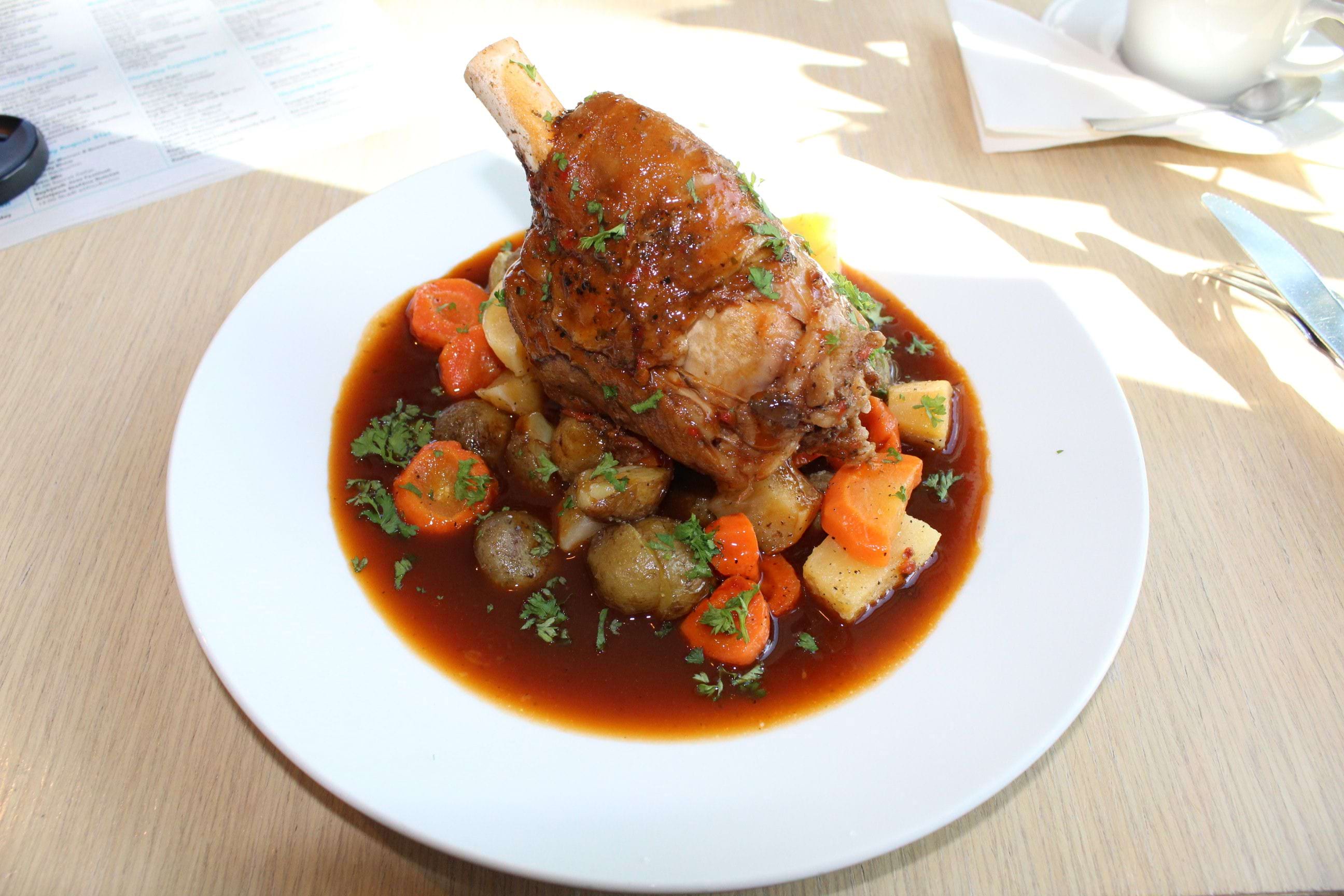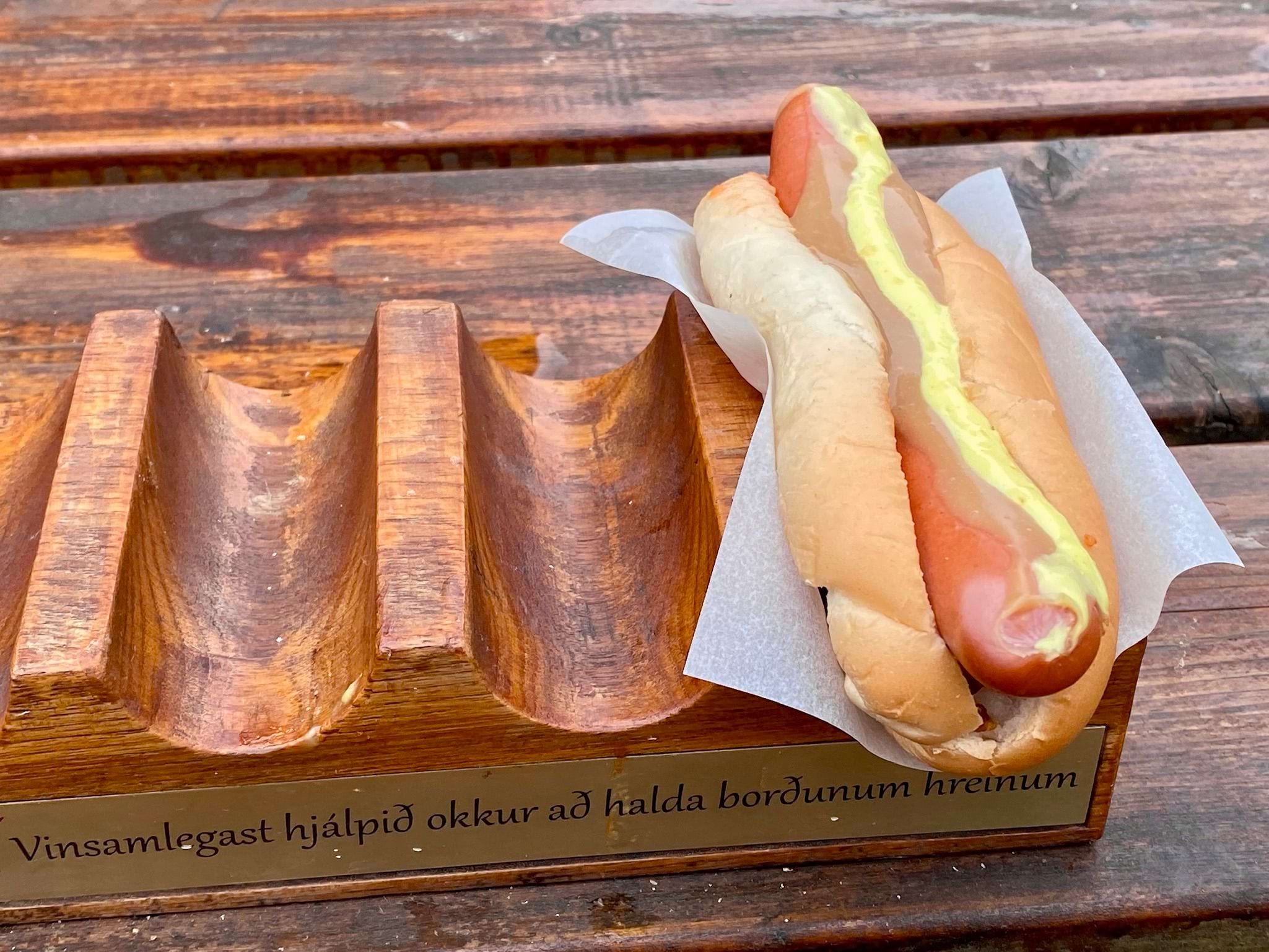Icelandic Cuisine
Iceland is a nation founded on fishing the wild seas of the Atlantic, going back more than a thousand years when harvesting the ocean’s bounty was a matter of day-to-day survival for the early settlers.
The sea shapes Iceland’s cultural heritage and economy, and it’s a deeply ingrained part of its society. So it’s no surprise that you’ll find a lot of seafood dishes on the menus in Iceland.

There’s just as much national pride in the quality of Íslenskt lambakjöt (Icelandic lamb), which the European Commission recently made the first Icelandic product to receive its Protected Designation of Origin certification.
The first settlers brought sheep to Iceland in the 9th century, and lamb has remained the country’s favorite meat dish ever since.
Icelandic lamb is exceptionally tender, primarily grass-fed, and rich in Omega-3. The lambs roam freely in Highland pastures during the summer, feeding on wild herbs and grasses, producing a unique game-like taste.
While seafood and lamb are the most traditional elements of Icelandic cuisine, you’ll find that most Reykjavík restaurants will also offer beef, chicken, pork, vegetarian, vegan, and gluten-free options.
There are now three Michelin-rated restaurants in Iceland (two in Reykjavík and one at the Blue Lagoon), and the country is fast emerging as a fascinating foodie destination, attracting top chefs from all over the world.
The capital is home to many specialized restaurants where you can sample lots of other cuisines, including Indian, Korean, Chinese, Thai, Japanese, Italian, French, Spanish, and Mexican menus.
Expect to enjoy many exciting dishes influenced by new techniques, made with high-quality seasonal ingredients sourced locally, cooked with green energy, and relatively free of artificial additives.
And if you want to eat like a Viking, you can enjoy weird and wonderful local delicacies like Hákarl (fermented Greenland shark), Súrir hrútspungar (sour ram’s testicles) and Svið (singed sheep’s head)!
“You’ll love it; it’s terrible” captures the character of local attitudes towards some of these traditional dishes.
The early Icelanders had to make the most of whatever they could catch or grow, with everything either pickled, dried, or fermented to get them through the long, cold winters.
Even though modern farming techniques and food imports have improved Icelandic cuisine, there’s still a fierce national pride in maintaining these traditional recipes as a reminder of those earlier days.
But don’t worry if you don’t like the sound of some of these dishes!
Icelanders also love pizzas, burgers, and fish and chips, and you’ll find plenty of those dishes on the menus in the capital city and elsewhere around the country.
And vegans and vegetarians will find many delicious plant-based meals and dairy-free options.
Here’s our guide to some of the highlights of Iceland’s unique cuisine:
Breakfast
Start your day with a snuður (cinnamon bun) or a kleina (twisted doughnut) at one of the city’s bakeries.
Snuður is covered with pink, chocolate, or caramel glaze, and kleina are made with deep-fried flour dough, making them delightfully crispy on the outside and soft and tasty on the inside.
Skyr is a true Viking staple, made here in Iceland for over a thousand years. A thick creamy yogurt, it’s packed with calcium but extremely low in fat. It takes three liters of milk to make a liter of skyr.
You’ll find skyr in the shops and on every breakfast menu – add some blueberries for a healthy start to the day.
Lunch and dinner
A popular Icelandic dish, plokkfiskur is a traditional fish stew made with fish, potatoes, and onions) and it’s an ideal choice for a filling lunchtime meal.
Don’t miss out on lamb meat soup, lamb shanks, or roasted leg of lamb – you may never taste anything better than Icelandic lamb.
If you like lobster, look out for humar (langoustines), the Icelandic version of these tasty crustaceans. Try a mouthwatering lobster soup (humarsupa) whenever you see it on the menu!
Viking delicacies!
When you visit Iceland, you should have a go at hákarl, the famous fermented Greenland shark delicacy. It’s a genuine food challenge, presented in tiny cubes and often accompanied by a shot of brennivín to wash it down!
Originally a life-saving winter meal for the early Icelanders, the shark’s meat was so inedible that it had to be buried underground for at least six months before people could stomach it.
Bread with your dinner?
Iceland’s demanding climate made it difficult for the early settlers to grow grain for bread-making. Still, ever resourceful, Icelanders found a way to bake bread.
Using the geothermal heat bubbling underground, rugbrauð (rye bread) is a rich, dark, sweet-tasting bread cooked overnight in holes by hot springs.
There are secret recipes for hverbrauð (lava bread) in communities all around Iceland, mixing the dough up and leaving it underground for 24 hours to bake.
Dessert
Icelanders couldn’t get hold of sugar until the end of the 19th century, but they’ve more than made up for lost time since then, creating a mouthwatering collection of sweet treats to enjoy.
The locals love ice cream, and you’ll find ice cream parlors open all year round in every town in the country, no matter the weather.
Lakkris (licorice) is also very popular, and it was enjoyed by Icelanders for decades before chocolate was introduced. Omnom is the place to go for high-quality Icelandic chocolate.
Try an Icelandic pancake with rhubarb or bilberry jam, topped with cream, or a waffle dripping with ice cream and chocolate sauce!
Those famous hot dogs!

Looking for a late-night street food snack? Grab a hot dog from Bæjarins Beztu Pylsur, the famous downtown hot-dog stall. “The Town’s Best” even tempted Bill Clinton to try one!
Icelandic hot dogs have a unique blend of lamb, pork, and beef, giving them a distinct flavor, and there are no preservatives and artificial additives, making them a healthier fast food option.
Order “eina með öllu” or “one with everything” – a hot dog in a bun coated with ketchup, mustard, remoulade (a mayonnaise-based sauce with pickles and capers), crispy fried onions, and raw onions.
It will keep you going at the end of a big night out in 101!
Let’s have a drink
Historically, Icelanders raised their spirits with mead and ale, but there was a period of prohibition in the 20th century, and beer was illegal in Iceland until 1989!
Since then, there has been a craft beer revolution, and you’ll find an excellent beer selection in bars nationwide.
Brennivín is Iceland’s signature drink, distilled from fermented grain mash, combined with Iceland’s soft high-pH water, and flavored with caraway seeds.
A modern-day invention, this clear spirit has hints of rye bread. But watch out - bottled at 40% ABV, it has quite a kick!
Pure Icelandic water is the perfect base for making vodka. Since 2005, Reyka has been distilling premium vodka from wheat and barley in Iceland.
Reyka is also the world’s first “green” vodka, using sustainable energy from geothermal heat and renewable electricity.
Something to take home?
Looking for an authentic Icelandic souvenir? Take home some harðfiskur. It’s dried fish, usually from salted cod or haddock. It’ll last forever and is an excellent source of high-quality protein, but you’ll need some butter to enjoy it!
Although environmental concerns remain, you can also find wild game dishes in some restaurants, including reindeer, geese, duck, puffin, and whale meat.
Why is Iceland so hooked on fish?
Iceland is perfectly placed in the middle of the Atlantic Ocean, where ocean currents meet to create the ideal conditions for fish to feed and breed in astronomical numbers.
The nutrient-rich waters support an incredibly diverse and productive marine ecosystem, including whales, dolphins, porpoises, enormous shoals of cod, haddock, Arctic char, herring, monkfish, langoustines, shrimp, scallops, mussels, and krill.
Iceland’s glacial rivers and sea fjords are a seasonal home to countless migrating salmon and freshwater trout, attracting anglers worldwide.
Over the centuries, Icelanders learned the migration and breeding patterns to catch and consume what they needed to live and trade in this oceanic bounty with other nations. Even today, fishing is Iceland’s main export product.
Most of Iceland’s towns and villages are on the coast, and almost every Icelandic family has a historical link to the fishing industry.
Christmas Cuisine
Are you celebrating Christmas or New Year’s Eve in Iceland?
Then look out for laufabrauð (“leaf” or “snowflake” bread), a delicately decorated flat bread made from basic bread dough, deep fried in lamb fat.
A traditional festive food in North Iceland, it’s rolled so thin that you should be able to read the Bible through the bread!
An integral part of Icelandic festive traditions, baking laufabrauð has been submitted for inclusion on UNESCO’s list of Intangible Cultural Heritage.
Christmas is a time for feasts, so many special meaty treats are on the menu.
Hangikjöt (hung meat) is a savory smoked lamb that uses a curing method that began in Iceland’s early Viking period when meat was hung and smoked.
It can be served raw, sliced like prosciutto, or cooked with potatoes in a sweet bechamel sauce and pickled red cabbage.
In Viking times, Icelandic lamb was smoked with horse or sheep dung! Today, most people prefer birch-smoked lamb, but you can still find “Taðreykt Hangikjöt“ or dung smoked hung meat in Icelandic supermarkets.
The smelliest of all Icelandic food traditions is Þorláksmessa (Thorlac’s Mass), a festive celebration on December 23rd when Icelanders traditionally eat putrefied skate, potatoes, and lard to symbolize what was traditionally the end of the Christmas fast.
Instead of that ammonia-infused dish, you can always warm yourself on a chilly December day with a steaming bowl of Kjötsúpa (meat soup) packed full of free-range lamb meat and seasonal vegetables.
Even better, make time for tomato soup too!
Iceland might be a cold country, but its endless geothermal heat supplies warm rows and rows of greenhouses around the country, where tomatoes, bananas, and fresh vegetables are grown all year round.
So, if you’re visiting Iceland soon, don’t worry! There’s a lot more than fish, lamb, and fermented shark on the menu for you to enjoy!